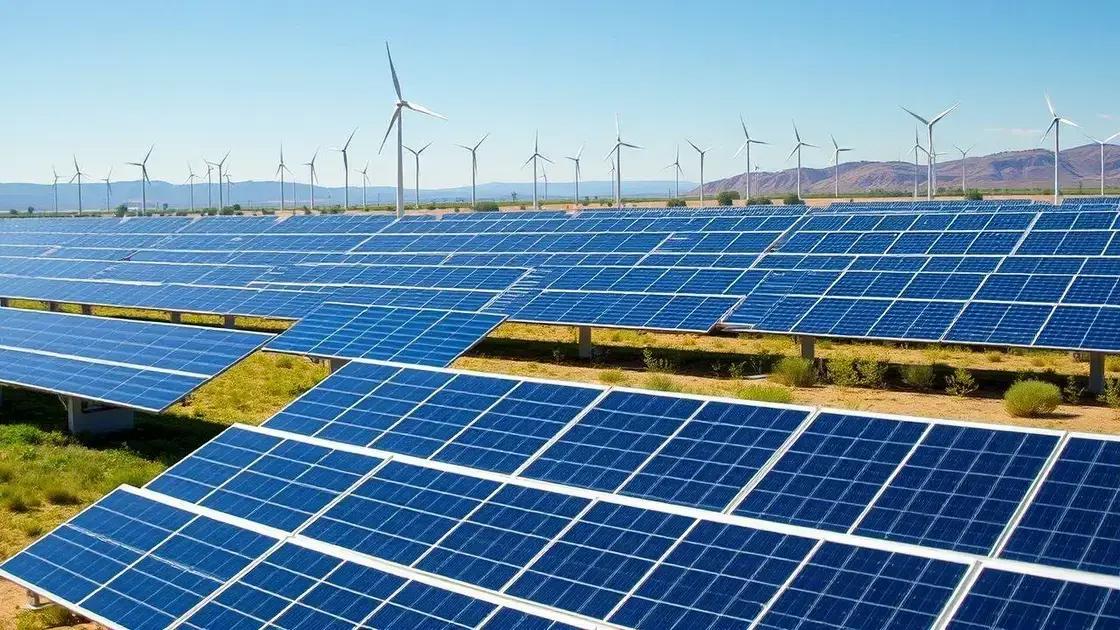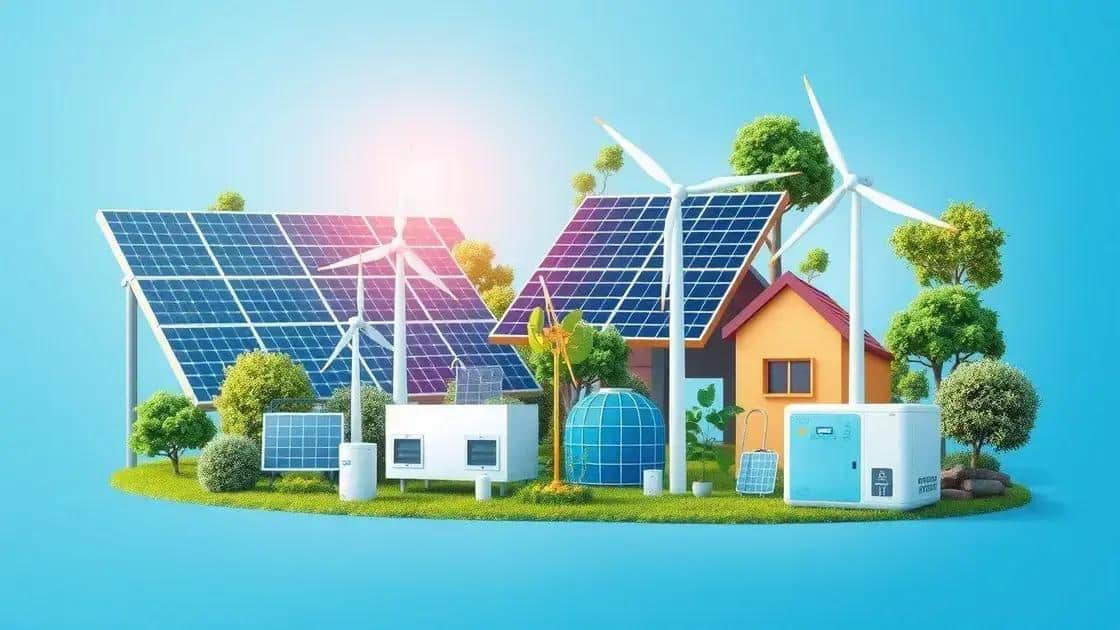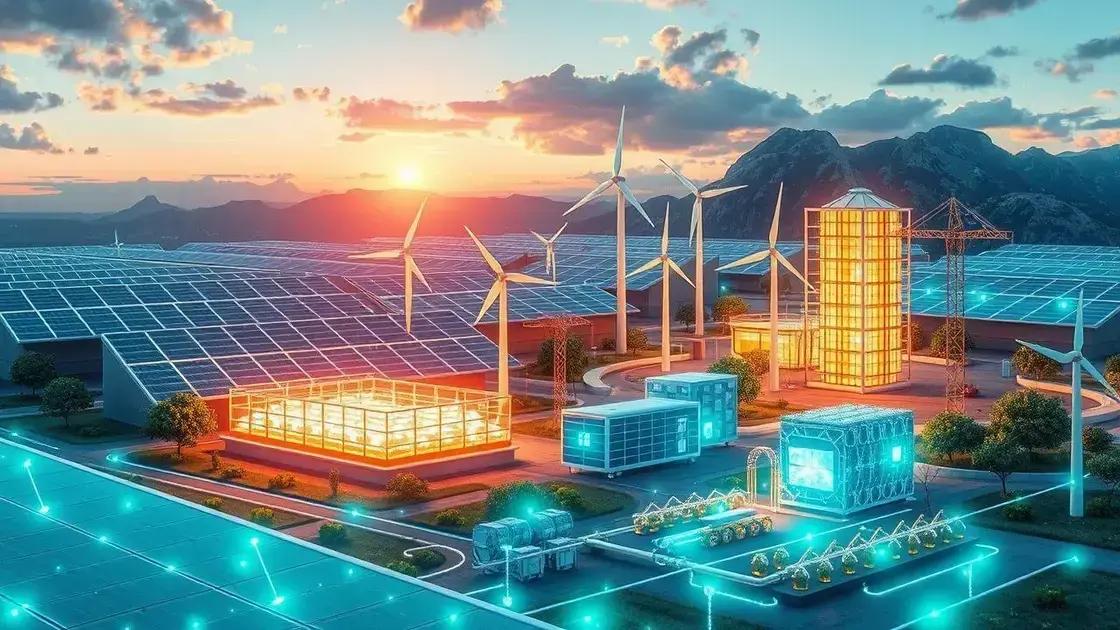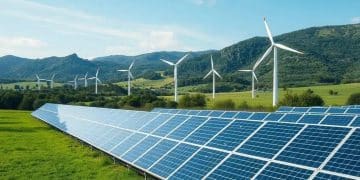Insights on clean energy projects usa reshaping the future

Insights on clean energy projects in the USA highlight the growth of renewable energy technologies, government support, and successful case studies driving sustainability and economic benefits for a healthier planet.
Insights on clean energy projects usa highlight the shift towards sustainable energy solutions. Have you ever wondered how these projects impact our daily lives and the environment? Let’s delve into the current landscape.
Understanding clean energy projects in the USA
Understanding clean energy projects in the USA is essential for grasping the future of our energy system. These projects aim to reduce reliance on fossil fuels, striving for a more sustainable and eco-friendly approach. Through various initiatives, clean energy is not just a trend; it’s a vital step towards a healthier planet.
Key Areas of Clean Energy
In the USA, several key areas are being explored within clean energy projects. These areas include:
- Solar energy: Harnessing sunlight to generate electricity, solar panels are becoming increasingly common on rooftops and solar farms.
- Wind power: Wind turbines are installed in vast areas, converting wind energy into usable power.
- Hydroelectric systems: Utilizing water flows from rivers and dams to generate electricity.
- Biomass energy: This involves using organic materials to produce renewable energy.
Each of these areas showcases how innovation plays a critical role in the development of clean energy projects. By utilizing these resources, we can mitigate environmental impacts and create sustainable solutions for our energy needs.
The Importance of Clean Energy Education
Educating the public about clean energy projects is crucial. Understanding how these initiatives function can lead to greater support and involvement from communities. Workshops, seminars, and educational materials can help raise awareness.
In addition, collaborations among local governments, businesses, and non-profits can enhance the outreach of clean energy education. The more informed people are about clean energy solutions, the more likely they are to engage with and promote these initiatives.
Furthermore, the economic benefits of clean energy are significant. By investing in renewable technologies, we not only create jobs but also stimulate local economies. Clean energy projects drive innovation and provide long-term environmental and economic advantages.
Key technologies driving clean energy initiatives

Key technologies play a vital role in driving clean energy initiatives forward. These innovations are transforming how we produce and consume energy. By understanding these technologies, we can better appreciate their impact on today’s energy landscape.
Renewable Energy Sources
One of the main technologies in clean energy is renewable energy sources. These include:
- Solar panels: Collect sunlight and convert it into electricity, making solar energy more accessible.
- Wind turbines: Capture wind energy to generate electricity, often seen in large farms.
- Geothermal energy: Utilizes heat from the Earth’s core, providing a consistent energy source.
- Hydropower: Generates electricity by harnessing flowing water, commonly from rivers and dams.
Each of these technologies has unique benefits and applications. For instance, solar panels are flexible and can be installed in residential areas, while wind turbines are effective in open landscapes.
Advanced Grid Technologies
Another critical aspect of clean energy is the development of advanced grid technologies. These improvements allow for better management of energy resources. Smart grids enable two-way communication between the provider and consumers, helping to optimize energy flow.
Through data analysis, these systems monitor energy consumption and adjust supply accordingly. This results in decreased waste and increased reliability in energy delivery.
Innovative energy storage solutions further enhance clean energy initiatives. Technologies such as lithium-ion batteries store excess energy generated from renewable sources. This stored energy can then be used during peak demand times, ensuring a steady power supply.
As more homes and businesses adopt these technologies, the efficiency and effectiveness of clean energy systems will continue to grow, leading us toward a more sustainable future.
Successful case studies in clean energy
Successful case studies in clean energy illustrate how innovative projects can thrive and make a significant impact. These examples show the potential of renewable energy solutions and encourage further investment and development.
Case Study 1: Solar Energy in California
California is a leader in solar energy adoption. The state has implemented various programs to promote solar power, including incentives for homeowners and businesses to install solar panels. As a result, California has significantly increased its solar energy capacity. This not only helps reduce carbon emissions but also creates jobs in the renewable energy sector.
Case Study 2: Wind Power in Texas
Texas boasts the largest wind power capacity in the USA. The state’s vast open land is ideal for wind farms, which have been rapidly developed. These projects have transformed Texan energy production, decreasing dependence on fossil fuels. Wind energy is now a crucial part of Texas’s energy mix, showcasing how committed policies and natural resources can benefit clean energy initiatives.
Case Study 3: Geothermal Energy in Iceland
Iceland is renowned for its use of geothermal energy. This resource provides a substantial portion of the country’s electricity and heating. By utilizing the natural heat from the Earth, Iceland has minimized its carbon footprint. This case exemplifies how countries can leverage local resources to achieve significant environmental benefits.
Each of these case studies demonstrates practical applications of clean energy technologies. They not only highlight successful implementation but also inspire other regions to pursue similar initiatives. Learning from these successes can guide future clean energy policies and projects worldwide.
Future trends in clean energy projects

Future trends in clean energy projects promise exciting developments that can reshape how we produce and consume energy. As technology advances and environmental concerns grow, several key trends are emerging.
Increased Use of Renewable Energy
One of the most significant trends is the increased focus on renewable energy sources. Energy from the sun, wind, and water is becoming more accessible and affordable. Many countries are setting ambitious goals to reach 100% renewable energy in the coming decades.
Technological Innovations
Technological innovations are crucial in pushing clean energy forward. Advanced energy storage solutions, such as batteries, are being developed to store energy more efficiently. This allows for a stable energy supply, regardless of weather conditions.
Moreover, the growth of smart grids enables more efficient energy distribution. These systems adjust energy flow based on demand, reducing waste and improving reliability.
Decentralized Energy Systems
Decentralized energy systems are also gaining traction. Instead of relying on large power plants, many communities are investing in local energy solutions. This includes solar panels on rooftops and community wind farms, empowering individuals to generate their own energy.
Such systems promote energy independence and can significantly lower energy costs. They also reduce the burden on traditional energy infrastructure, making the system as a whole more resilient.
Policy Support and Investment
Government policies are increasingly supporting clean energy projects. Many are offering tax credits and subsidies to encourage investment in clean technologies. This support fosters innovation and accelerates the transition to a clean energy future.
As more investors recognize the potential of clean energy, funding for projects is expected to increase. This influx of capital will drive future advancements and help lower the overall cost of clean energy solutions.
In conclusion, the future of clean energy projects looks bright and full of potential. As technology advances, we can expect to see more innovations and improvements in renewable energy sources. The importance of government policy and community involvement will also play a crucial role. By focusing on sustainability, we can create a healthier planet for future generations. These trends not only promise environmental benefits but also economic growth and energy independence.
FAQ – Frequently Asked Questions about Clean Energy Projects
What are clean energy projects?
Clean energy projects are initiatives aimed at generating energy through renewable sources like solar, wind, and hydro, reducing reliance on fossil fuels.
How do clean energy projects impact the environment?
These projects help decrease carbon emissions, promote sustainability, and contribute to a healthier planet for future generations.
What technologies are used in clean energy?
Technologies include solar panels, wind turbines, geothermal systems, and advanced energy storage solutions that enhance renewable energy efficiency.
What role do government policies play in clean energy initiatives?
Government policies can provide incentives, support funding, and create regulations that facilitate the growth and adoption of clean energy projects.





